Unit 2.4: Etruria/Ancient Rome
1/10
There's no tags or description
Looks like no tags are added yet.
Name | Mastery | Learn | Test | Matching | Spaced |
|---|
No study sessions yet.
11 Terms
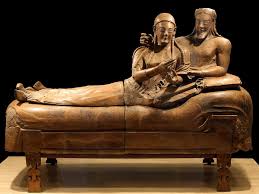
Sarcophagus of the Spouses
Artist: N/A
Period/Movement: Etruscan
Medium: Terra cotta
Location: Etruria
Significance: intended to hold human remains, archaic smile, stylized braided hair, “unheard of” level of affection, necropolis, four pieces placed together
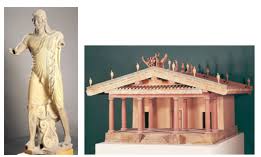
Temple of Minerva & Sculpture of Apollo
Artist: N/A
Period/Movement: Etruscan
Medium: Wood, mud brick, tufa (temple); terra cotta (sculpture)
Location: Rome, Italy
Significance: holds a statue of the diety they repersent, home for Athena, portico= front porch (temple)
animated and moving (Etruscan style), idealized form, wet drapery, support to hold up, archaic smile (sculpture)
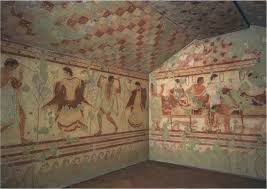
Tomb of the Triclinium
Artist: N/A
Period/Movement: Etruscan
Medium: Tufa and fresco — allowed for long-lasting
Location: Tarquinia, Italy
Significance: registers, posing in composite view, records of domestic life, holds ashes and offerings to the dead, pictures people casually dining in triclinium
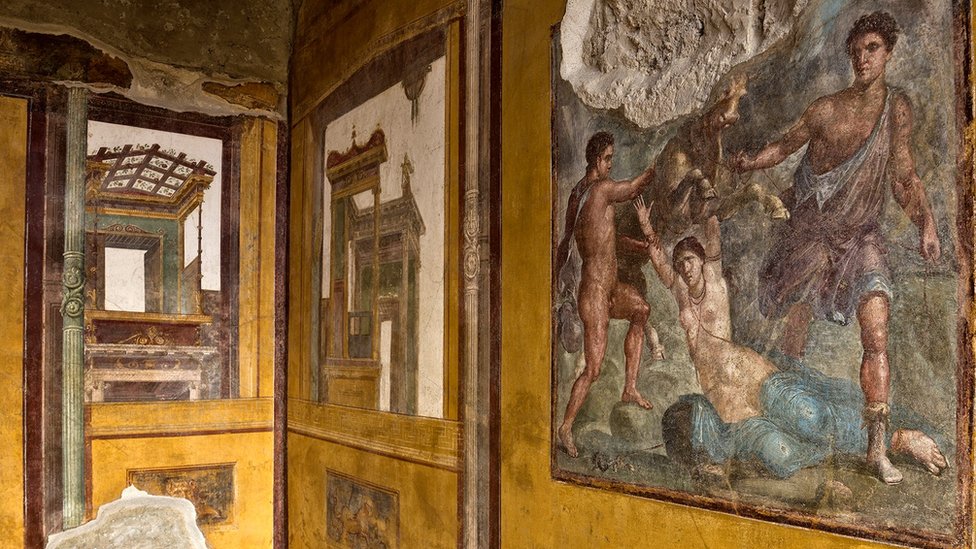
House of Vettii
Artist: N/A
Period/Movement: Imperial Rome
Medium: Cut stone and fresco
Location: Pompeii, Italy
Significance: wall paintings in Roman Culture, atrium: high ceilings, Mt. Vesuvius: volcano which destroyed the house, located in the Vettii family’s house: shows wealth
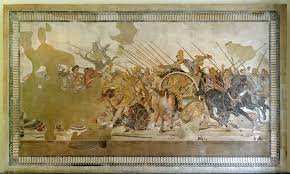
Alexander Mosaic from the House of Faun, Pompeii
Artist: N/A
Period/Movement: Republican Rome
Medium: Mosaic Roman copy of a Greek wall painting
Location: Faun, Pompeii
Significance: made up of title: tesserae, Alexander the Great (Rome) defeating Persian King Darius || (Persia), dramatic effects, placed on floors in upper class homes
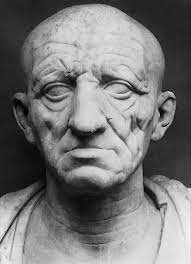
Head of a Roman Patrician
Artist: N/A
Period/Movement: Republican Rome
Medium: Marble
Location: Rome, Italy
Significance: patrician class= elites, bust, exaggeration on detail/age/wisdom, tribute/honor of loved one, verism= show realistic details
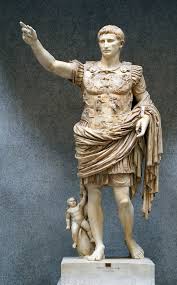
Augustus of Prima Porta
Artist: N/A
Period/Movement: Imperial Rome
Medium: Marble
Location: Rome, Italy
Significance: wet drapery, child resembles cupid (shows divinity), contrapposto form, position of power, has a fight/war scene on clothing

Colosseum
Artist: N/A
Period/Movement: Imperial Rome
Medium: Stone and concrete
Location: Imperial Rome
Significance: place of brutality executions , entertainment place (gladiator fights or animal hunts), remains a symbol of Rome’s power, Corinthian/Doric/Ionic columns
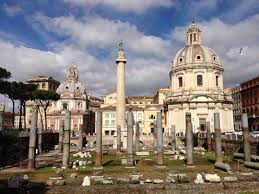
Forum of Trajan
Artist: N/A
Period/Movement: Imperial Rome
Medium: Brick and concrete (architecture), marble (column)
Location: Rome, Italy
Significance: markets, multistory, groin vaulting/barrel vaults in market, columns: celebrates the victory in the Dacian war, basilica plan
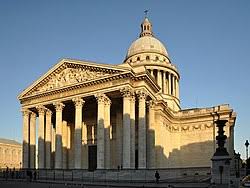
Pantheon
Artist: N/A
Period/Movement: Imperial, Rome
Medium: Brick, concrete, stone
Location: Rome, Italy
Significance: temple for the Roman Gods, corinthian columns, sculptures of gods in niches, big portico in the front with a rotunda in back that has a dome with an oculus, burial space
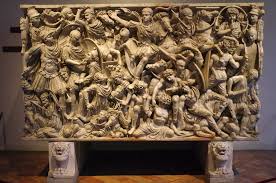
Ludovisi Battle of Sarcophagus
Artist: N/A
Period/Movement:
Medium: Marble
Location: Imperial Rome
Significance: chaotic scene of Romans (noble heroes) and Goths (barbarians) in a battle scene, deep relief, tomb